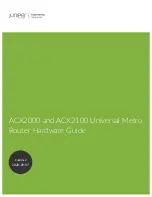
212 - 238 CCNA 2: Routers and Routing Basics v3.1 Instructor Guide – Appendix B
Copyright
©
2004, Cisco Systems, Inc.
B.4.5 Ask the right questions
Figure 1: Ask the Right Questions
In classrooms and labs across the United States, students are typically given questions that
test their low-level and high-level cognitive abilities. Instructors who ask low-level questions
expect students to respond with basic recall of facts and comprehension based on information
they heard in a lecture or read from the curriculum. An example of a low-level question is to
ask students to name the levels of the food pyramid or list the elements on the periodic table.
This is the most common type of question that students are asked in schools. High-level
questions are more open-ended and interpretive. Students are required to analyze and
synthesize information. With high-level questions, students are asked to communicate their
knowledge through logic, reasoning, and evidence. An example of a high-level question is to
ask students to predict the next world epidemic or explain why rockets cannot launch into
outer space in extremely cold weather.
The average wait time for teachers after they ask a question in a classroom is approximately
1.5 seconds. Research indicates that with just a 3-second waiting period, student answers are
more accurate and organized. Instructors should ask students questions about the concepts
that they will continue to understand long after the little details fade away from their short-term
memories. These concepts will require teachers and students to reflect on the intrinsic value of
the questions that they ask and the truths that these questions may uncover.
The late Dr. Mary Budd Rowe was an accomplished science educator at the University of
Florida and Stanford University. Dr. Rowe studied classroom dynamics. One of Dr. Rowe’s
greatest contributions was to study the time between when an instructor finishes asking the
class a question and when the instructor breaks the silence and prompts the class further to
respond to the question.
Figure 1 shows a timeline. At time Q, the instructor finishes asking a question. At time P, the
instructor breaks the silence, either with encouragement or the correct answer. Dr. Rowe
called the time between Q and P the wait time. This concept can lead to significant
improvements in student learning.
•
The instructors who participated in the study had an average wait time of about 1
second after they asked a question and before they took further action to elicit a
response. Dr. Rowe discovered that if the wait time was extended from about 1















































